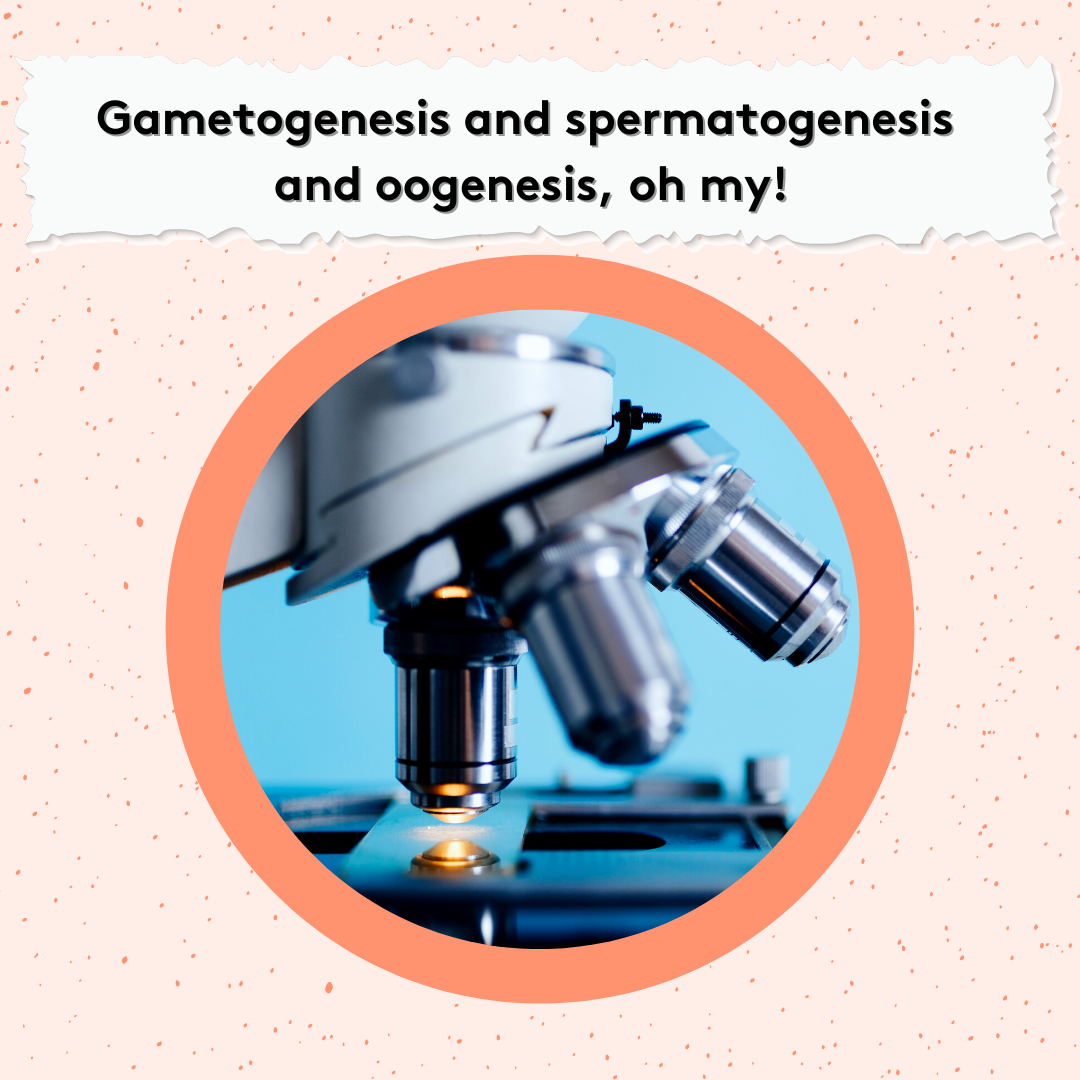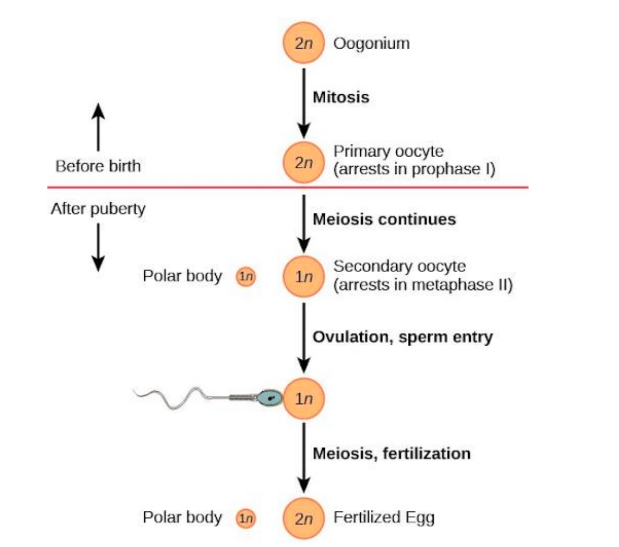 Meiosis is one of those processes that we all learned about in high school biology as a deceptively simple concept. You take the diploid cell, divide it twice, and it becomes four haploid gametes that are each capable of participating in fertilization. Easy, right?
Meiosis is one of those processes that we all learned about in high school biology as a deceptively simple concept. You take the diploid cell, divide it twice, and it becomes four haploid gametes that are each capable of participating in fertilization. Easy, right?
But once you start learning about spermatogenesis and oogenesis, the simple process of meiosis as you understood it starts to become a bit more confusing. Wait, I thought four haploid cells are produced, so why does oogenesis only produce one egg? And what is all this spermatogonia and secondary oocyte business?
Fear no more: this blog post is here to clarify any confusion you may have about gametogenesis and to explain the important differences between oogenesis and spermatogenesis. Whether you’re studying for the MCAT (woohoo!) or a biology class—or if you just want to impress your freshman biology teacher with a more nuanced understanding of meiosis—this is the post for you!
Gametogenesis
Gametogenesis describes the process by which normal diploid cells undergo meiosis to form haploid gametes: egg and sperm. Spermatogenesis refers to male gametogenesis, while oogenesis is female gametogenesis.
There are some key similarities between spermatogenesis and oogenesis: both processes are a form of meiosis. Additionally, the cell stages of spermatogenesis and oogenesis bear mostly similar names (-gonium, primary -ocyte, secondary -ocyte). However, this is basically where the similarities end.
Spermatogenesis
First, let’s describe spermatogenesis. Spermatogenesis begins in the seminiferous tubules of the testes with a diploid spermatogonium. This spermatogonium will undergo DNA replication in the S phase to become a (still diploid) primary spermatocyte. The primary spermatocyte will undergo meiosis I and become a haploid secondary spermatocyte. This is followed by meiosis II, which generates the haploid spermatids. Finally, these spermatids will migrate to the epididymis, where they mature into spermatozoa (i.e. sperm). The result is 4 sperm produced from a single spermatogonium.
Spermatogenesis follows the “classical” steps of meiosis that you probably learned in early biology classes. Oogenesis, on the other hand, is where things get a bit more complicated.

Spermatogenesis begins in the seminiferous tubules and finishes in the epididymis (the site of sperm maturation, not shown here). Sertoli cells are cells which provide nutrients and support for spermatogenesis.
Oogenesis
While spermatogenesis produces four sperm cells per spermatogonium, oogenesis only results in one egg cell per oogonium. Furthermore, while spermatogenesis can happen over a male’s lifetime (starting at puberty), females are born with a finite number of oogonia that can undergo oogenesis, and this happens during very discrete points in their lives.
Oogenesis begins with the diploid oogonium (which forms during fetal development). Similar to the spermatogonium, it undergoes DNA replication to become the diploid primary oocyte. Here is an important difference: rather than proceeding immediately to meiosis I, the primary oocyte will actually arrest at prophase I. This means that females are born with all of the eggs as primary oocytes in prophase I. Meiosis will not proceed until the female gets her first menstrual cycle, at which point one primary oocyte per month will proceed with meiosis. The result of meiosis I is a secondary oocyte and a polar body (both haploid). This is another important difference. Rather than producing two viable haploid cells, meiosis I produces only one cell (the secondary oocyte) that can proceed to meiosis II. The polar body is much smaller and does not proceed further. The secondary oocyte then arrests at metaphase II and will only complete meiosis II if fertilized. If fertilized, the completion of meiosis II will result in a mature ovum and another polar body which is also incapable of being fertilized.

Oogenesis begins during development with oogonia becoming primary oocytes that arrest at prophase I before birth. At puberty, meiosis resumes one oocyte at a time, resulting in one mature egg and multiple much smaller polar bodies.
Summary
As you can see, there are a lot of important differences between spermatogenesis and oogenesis. Most important to note is that spermatogenesis produces 4 viable gametes while oogenesis produces 1 incredibly large viable gamete (keep in mind that the egg will make up a majority of the volume of the zygote). While spermatogenesis is a continuous process that happens over the course of life, oogenesis happens at distinct moments and has a definite end point (i.e. running out of eggs).

Look at how MASSIVE the egg is compared to the sperm. While the sperm contributes half the genetic material to the zygote, it’s really the egg that’s putting the team on its back, contributing the other half of the genome as well as basically all the cytoplasmic material for the developing fetus (FUN FACT: This is the basis for mitochondrial inheritance! All the mitochondria that you have in your body’s cells came from the egg that made you). And this is why the developing ovum needs to suck as much cytoplasm as possible from those polar bodies: to have enough cytoplasm to support the zygote.
However, do not let these differences distract you from the fact that the fundamental principles of meiosis hold true between these two processes. You still see a haploid cell capable of fertilization being produced from a diploid cell. Many of the intermediate cells bear similar names. Understanding these similarities will hopefully help you make sense the differences you see between these two forms of gametogenesis!
Comments